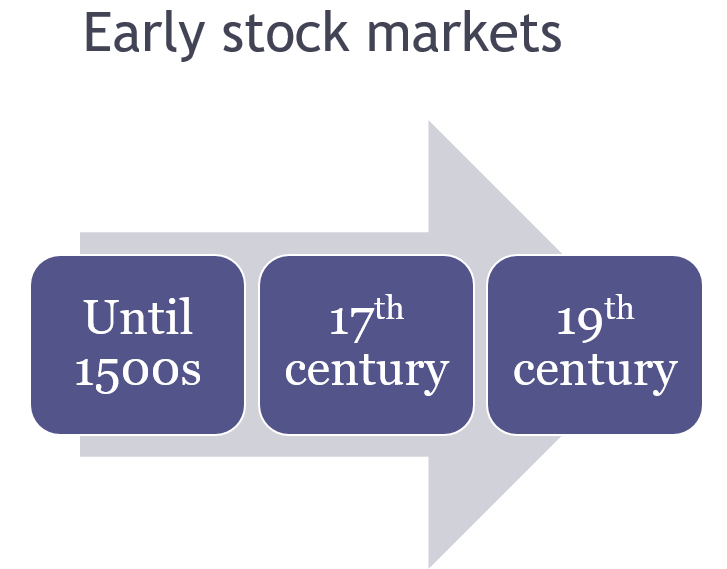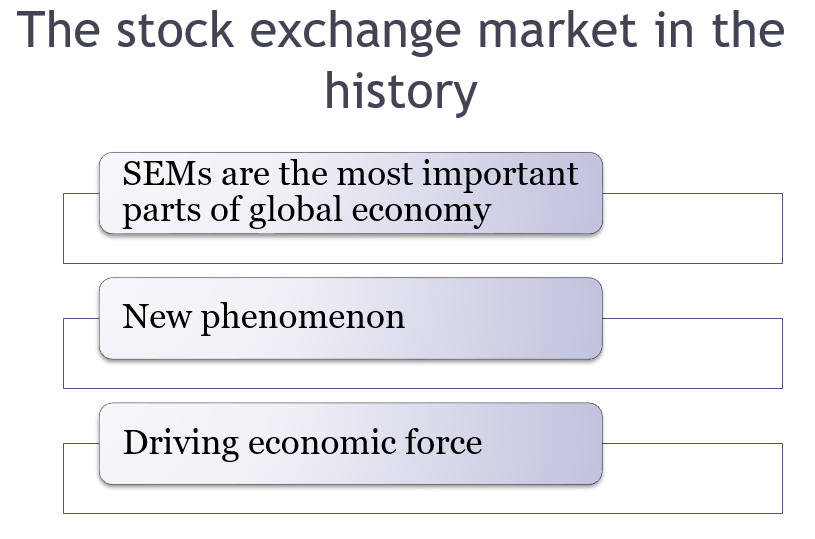The first international exchanges appeared in the 2nd century on the site of organized platforms and were associated with the trade of agricultural assets.
In order to increase the efficiency of the first commodity exchanges, traders began to develop exchange trading
rules, which were constantly modified over time.
The history of the development of international exchange activities is associated with Belgian traders and their cities. For the first time in historical works, the name of the owner of the hotel Van de Burse appears. He was the owner of the hotel, who tried to support his business by granting the right to rent his premises to commodity traders. His experience became quite popular and was an example for the construction of separate premises - commodity exchanges.
The first commodity exchange was built in Antwerp in 1556 and is officially considered the first building of a commodity exchange. An interesting fact is that the sign of this exchange is now known all over the world: "This exchange is a meeting place for traders of all nations and languages".
Antwerp is also known worldwide for its diamond exchanges. In 1904, a group of Antwerp
brokers founded the diamond exchange .
Starting from the 16th century, a significant number of international exchanges emerged, and the main assets traded were initially agricultural products. Later, as
financial assets began to play a significant role,
securities trading began on international exchanges. This is how the first
stock exchanges emerged. In the 17th century,
stock exchanges appeared in many European cities. It was the stock exchanges that became the financial centers of various European countries.
The first stock exchange was built in Amsterdam in 1602. It should be noted that the Amsterdam Stock Exchange is the oldest stock exchange in the world and is still operating today.
The opening of a new stock exchange in the Netherlands provided this country with a central place in the international financial system at that time. At that time, more than 5,000 transactions were concluded on stock exchanges by various participants. An example is the Amsterdam Stock Exchange. The first rules of exchange trading were developed there.
Today, the CME Group Commodity Exchange is known throughout the world, which has a rich history and achievements not only in the USA.
It is no coincidence that the CME Commodity Exchange has become an important center for international pricing for the main types of commodity groups of agricultural assets. History shows that in the 1830s and 1840s, the city of Chicago was the American grain trading center, where many Midwestern trade operations took place.
The industrial revolutions contributed to the development of this market. Farmers brought almost all their grain to Chicago in the hope of selling it at high prices, but this only led to price collapses on the markets. Even in favorable years, high price
volatility could be observed.
At the beginning of the nineteenth century, most of the American grain and oilseeds were produced in the inland states of the USA, where there were mainly farmer groups. Most of them were engaged only in agriculture. The sale of agricultural products now provided the main income. Most of these farmers did not have access to large markets and often did not receive a favorable price for their products.
The main trade route to the Atlantic coast was the New Orleans River, and small local grain markets were also built along it and the other rivers of the Ohio and Mississippi, which geographically stretched from East to West. The only logistics available at that time were river and sea transport.
Due to the inability to sell their grain at high prices, farmers were forced to process it into flour or feed and sell it, but this method often did not save them from awkward price fluctuations.
The Great Lakes became the main logistical route for delivering agricultural products to Chicago.


Шрифти
Розмір шрифта
Колір тексту
Колір тла
Кернінг шрифтів
Видимість картинок
Інтервал між літерами
Висота рядка
Виділити посилання
Text Alignment
